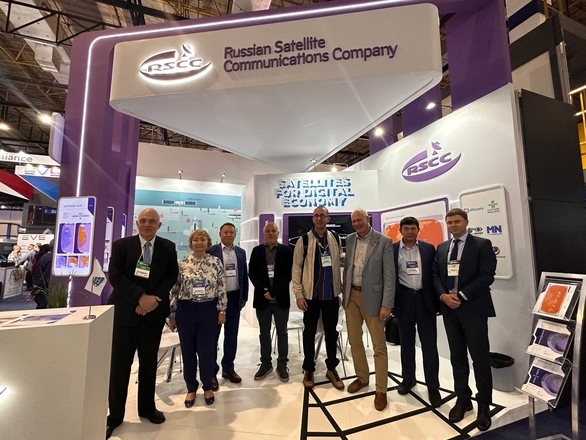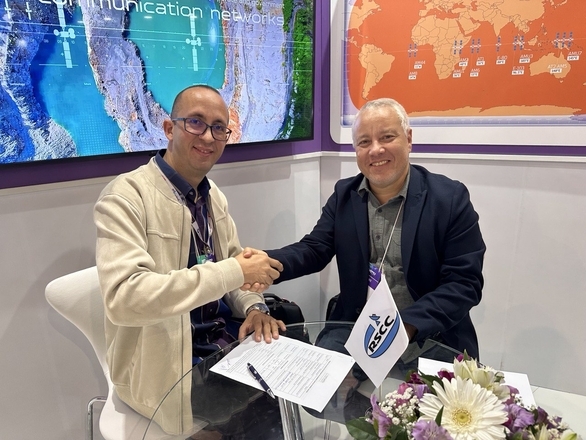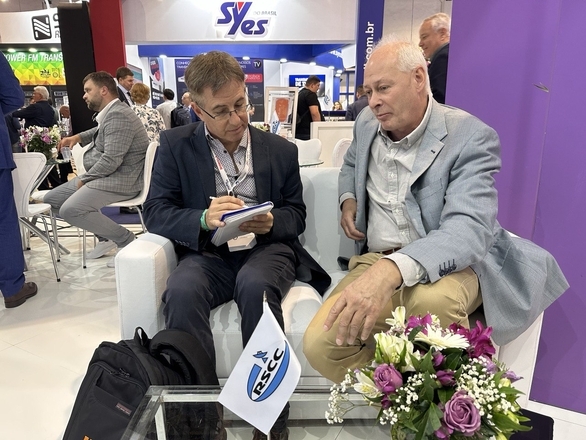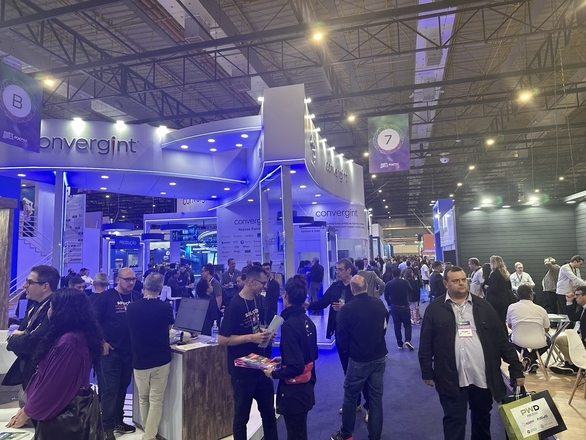Digital for the Amazon: satellite communications as driver for Brazil's infocommunication ecosystem
The Set Expo 2023 exhibition and conference that has been held in São Paulo has been focused on Brazil digital development prospects. Continuing growth of the satellite TV audience is a specific feature of the Brazilian telecommunication market and the main driver for all market operators. As for the Internet connectivity, the key development is driven either by government programs, including the creation of public access points, or by an increased coverage of cellular networks. Cellular operators in the region have ambitious plans for 100% coverage of 4G services, but this is impossible without satellite technologies. This conclusion was made by experts at Set Expo 2023.
The exhibition has been opened by the Minister of Communications of Brazil, Juscelino Filho. He noted that ensuring the connectivity in Brazilian municipalities was critical to promoting economic growth, social development and equal access to public goods.
Better connectivity can bridge the digital divide, increase access to education and basic services, and promote regional integration and cooperation.
By building a robust communications network, Brazil can achieve greater inclusiveness, innovation and resilience in the face of future challenges.
As the experts discussed at the exhibition, there were several promising development areas for satellite operators in Brazil: connection of remote areas, government educational programs, healthcare, and agriculture. Out of 216 million people in Brazil, 88.4% live in cities. The Internet penetration rate among citizens is quite high – 84.3% (about 181 million people are connected), but the coverage is uneven, with rural areas remaining unconnected.
Brazil has built 135,000 public schools, of which more than 33% lack the Internet access. At the same time, this figure is higher in rural areas – more than 52% of schools are not connected to the Internet.
The landscape that makes it difficult to deploy fiber optical lines and cellular networks is the main reason of the Brazil's digital divide. Various operators offer individual satellite broadband access services, but they are not affordable for people in the rural areas. Therefore, all prospects for bridging the digital divide are associated with government programs. Brazil launched a program aiming to connect the entire population back in 2010, and now the development of 5G networks is becoming its new driver. The country has 5,568 municipalities. Only 20% of Brazilian cities have access to high-quality internet, and only 5% are connected to the 5G network.
The agricultural sector is yet another point of growth for satellite communications. About 77% of all rural households have network connection for the whole family rather than individual one. They mainly use satellite technologies.
Apart from the infrastructure communications projects, Set Expo paid a lot of attention to new technologies for the production and delivery of video content and new broadcasting technologies. The National Telecommunications Agency (Anatel) was represented by its Vice President and Advisor, Moisés Moreira. According to Mr. Moreira, in the context of TV 3.0 Brazil had some clear advantages over other countries. One of these advantages is the availability of spectrum to fully explore the TV 3.0 features.
In addition, Brazil has a track record of successful public-private partnerships, especially in the area of Brazilian TV digitization and 5G rollout. This accumulated experience can be used while introducing TV 3.0 in the country.
At one of the Set Expo sessions, Fábio Ferraz, Director of Media Solutions at Globo, said that the broadcast industry was currently undergoing a digital transformation that was affecting business in several ways, for example, in terms of new AI services. Paulo Cruz Araujo, founding partner of Viacast from Uberlândia, shared his experience on the latest innovations in video broadcasting and 5G.
The company is using millimeter wave frequencies to expand the bandwidth and reach of equipment. Araujo spoke about an aircraft solution with a compact design and state-of-the-art technology allowing live video streaming directly from airplanes or helicopters, and providing live broadcast of sports events, news, etc.
National satellite operators in Brazil
Brazil has two operators with their own spacecraft. Telebras operates its Telebras SGDC-1 satellite primarily for government and military purposes. The capacity of this satellite allows connecting government agencies, schools and hospitals in hard-to-reach regions.
Embratel, the satellite division of Brazilian telecom giant America Móvil Group (AMX), operates five satellites: Star One C2, Star One C3, Star One C4, Star One D1 and Star One D2. The constellation operates in C, Ku, Ka and X-bands, covering entire Brazil, Latin America and a part of the United States. AMX actively uses Ka-band capacity to support its networks in hard-to-reach regions. AMX plans to develop 4G and 5G networks in Latin America, building on Embratel's capacity to reach rural areas. However, the development of 5G will most likely force the satellite operator to abandon the C-band, since AMX already uses the 3.625 GHz to 3.7 GHz band for terrestrial networks. Therefore, all TV broadcasting of the satellite operator, which is the main profit generator, is switched to the Ku-band. In total, about 20 million receivers need to be switched. The Brazilian government partially finances this process from the sale of 5G licenses.
Gustavo Silbert, Embratel's CEO, says that mobile operators' interest in using satellite is a powerful driver for the operator. The key factor here is the support of the large telecom operator AMX, which plans to develop 5G in Latin America.
Silbert is cautious about the multi-orbit strategy, believing that video broadcasting remains the main generator of cash flow in the region, and geostationary vehicles are optimal for this purpose. They help to successfully solve the tasks that AMX sets for its satellite division. First of all, Silbert believes, low-orbit systems will provide a major boost to the development of the satellite Internet of Things.
Cloud services are another promising area. Embratel has acquired the cloud technology startup Ustore, signed a strategic agreement with AWS, and created a new cloud division to serve vertical markets. The company actively promoted this service at its Set Expo booth. The operator shared, without disclosing specific figures, that over the past three years, it had tripled its revenue from the cloud business.
Global operators in the Brazilian market
Set Expo also featured global satellite operators, including SES, Eutelsat and Intelsat. RSCC also showcased its booth.
Eutelsat actively develops its business in the video content delivery area in the current situation. In order to promote the services of Eutelsat 65 West A, the operator carried out antenna installations for Brazilian cable operators, covering up to 15 million households. In addition, as part of a government program, Brazilian rural schools were connected to the Internet through the Eutelsat 65 West A satellite. Eutelsat has noticed increased communication demand in the South American market and has ordered a Flexsat satellite with a flexible payload and a total capacity of 100 Gbps from Thales Alenia Space to meet the demand. The satellite is expected to launch in 2026.
SES is the world's largest satellite operator in the media sector, with revenues exceeding €1 billion in 2022. Latin America is the company's second largest media market outside of Europe.
In Brazil, SES operates four satellites that are used for video distribution (both C and Ku bands) and recently launched SES-17, which provides Ka-band coverage across the country. In addition to direct satellite services, the company also offers additional video processing services such as transcoding, channel aggregation for streaming operators, and ad insertion to help customers better monetize their content and outsource infrastructure operations that are not their core business.
Another satellite operator represented at Set Expo was Intelsat. Intelsat's network for distributing video content to cable and local terrestrial networks covers more than 2,000 networks in Latin America with 44 million subscribers. In Brazil, the operator has installed antennas for more than 200 cable TV head-ends allowing it to reach more than 14.4 million subscribers by the Intelsat-14 satellite. Cellular operator TIM Brasil has connected more than 1,000 base stations and corporate customers via Intelsat. In the near future, TIM Brasil plans to provide 4G services to almost all cities in the country using satellite backhaul.
In-flight connectivity services are in high demand with international airlines in the Caribbean. Intelsat, SES and other international operators are active in this region. Local airlines are also involved. LATAM Airlines Group, in partnership with Intelsat, is connecting its Airbus aircraft fleet. 160 aircraft are planned to be equipped with IFC kits in three years.
Russian Satellite Communications Company, as a global operator running its business in 58 countries of the world, also contributes to bridging the gap in services between the urban and rural population in the region. Last year, the Andean Community entered RSCC’s Express-AM8 in the register of satellites, which may officially provide their communication and broadcasting services in Colombia, Peru, Bolivia and Ecuador, thus authorizing RSCC to provide its services in Latin America directly. Now, the area of the Latin American beam of Express-AM8 is used for broadcasting Brazilian regional television channels and sporting events. Earlier, it was used to build corporate networks in Suriname. In addition, RSCC, together with its Brazilian partners, erected a monitoring station in Uberlândia: now it covers the entire Latin American region. RSCC successfully distributes the largest Brazilian TV channels, including TV Difusora and TV Goiania, as well as the educational Univesp TV and TV Educação channels with a total TV audience exceeding 40 million. During the exhibition, a contract with TV Difusora was signed for a longer period.



